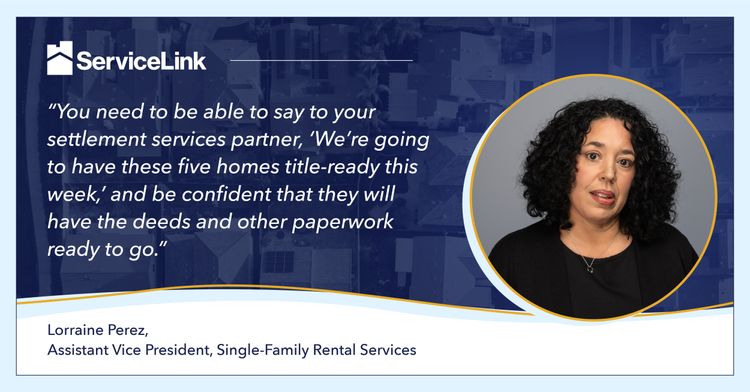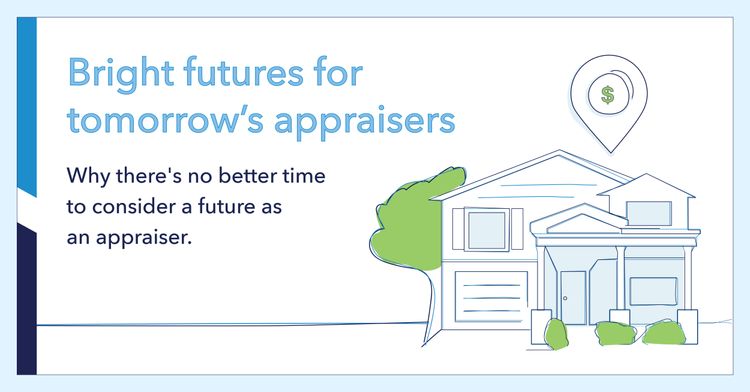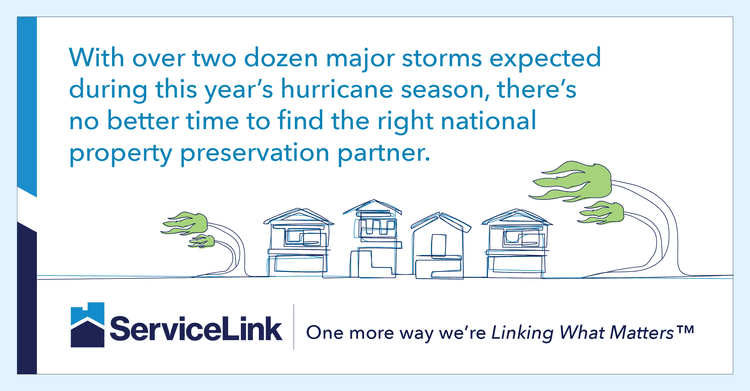The Build-To-Rent (BTR) market is on an amazing upward trajectory. Having the right service partner enables investors and builders to take full advantage of emerging opportunities. Lorraine Perez has watched the rise of the build-to-rent segment. “As an attorney doing builder closings a few years ago, I was seeing individuals buying newly constructed houses here and there for investment purposes. There was some momentum behind this type of activity, as investors embraced the idea of buying new homes to rent. Then came the pandemic. Everyone was home, many working from home, and suddenly there was widespread demand for more space and privacy,” says Perez, now senior director of single-family rental services at ServiceLink.
In response to this demand, investors and builders began teaming up in growing numbers to create communities of single-family houses where renters could enjoy the lifestyle of homeowners without the long-term commitment. “Investors started going directly to builders asking how many homes they could buy,” Perez says. “Builders started thinking, ‘If I can sell off 20 of my homes at one time, that looks good and attracts more people — investors and residents — to the community.’ They realized that, even in down times, this is a good way for them to make money, keep working and keep people employed.”
Growth in the BTR market has moved from steady to explosive. Per The State of the Nation’s Housing 2021 report by the Joint Center for Housing Studies of Harvard University, BTR hit a record high in 2020, with 50,000 new starts. That’s more than twice the number in 2011 (23,000). Many industry stakeholders and pundits look for momentum to accelerate even more. Brad Hunter, founder of market research and advisory firm Hunter Housing Economics, told The Wall Street Journal last summer that he expects the number of BTR homes being constructed annually to double by 2024.
Why BTR Appeals to Renters and Investors
Consumer demand for single-family rental housing is unprecedented. When RentCafe recently surveyed 3,300 renters, 78% said they would be interested in living in a community of single-family homes. No wonder: With on-site management and maintenance services, and often including amenities such as pools, playgrounds, fitness centers, dog parks and walking trails, BTR communities offer an attractive alternative to either buying a home or renting an apartment. And while many investors initially surmised that millennials would be the target demographic for these communities, they have found that their appeal is much more far-reaching.
“People across demographic groups are recognizing the benefits of renting a home,” explains Amy Borsi Daniel, senior vice president of title and close at ServiceLink. “Yes, it’s millennials, with and without children, but it’s also college students, recent graduates and empty nesters looking to downsize. That’s why it makes sense to build communities with a range of home sizes and styles. Investors have the opportunity to fill the need for housing and satisfy a lot of different types of consumers.”
In fact, investors potentially stand to gain a lot from their investments in BTR homes: a steady stream of income for a brand-new house that requires minimal attention in terms of repair, plus appreciation of the house over time. In addition, if an investor should need to pull cash out, it’s much easier to sell one or two houses than to find the right buyer for, say, a six-apartment housing unit.
Of course, like any business venture, BTR investment has its challenges. Topping the list is identifying tracts of land large enough to accommodate several hundred homes and affordable enough that they can keep rents in line with consumer expectations. Consequently, more building is taking place in suburban and rural markets than in urban locations. That’s all right with renters, many of whom are craving more wide-open spaces than their urban apartments can provide.
Another challenge is identifying a settlement services provider that can meet investors’ need for speed, scope, expertise and service.
What to Look for in a BTR Settlement Services Partner
When it comes to identifying a partner to manage title and close; valuation; flood services; and inspection, rehab and landscape services, BTR investors need to look for a company with specialized knowledge and experience. Here are some must-haves to consider:
Rolling closing capabilities
When you are building an entire community, you need a provider that can close according to your timetable. “Say that in a certain community, you are eventually going to need to close on 200 homes, but you might be building one to five, or six to 10, houses at a time. You want to close on those homes as soon as they’re ready,” says Perez. “You need to be able to say to your settlement services partner, ‘We’re going to have these five homes title-ready this week,’ and be confident that they will have the deeds and other paperwork ready to go. You need a partner with the resources and know-how to be able to do this on a weekly or monthly basis, depending how a community is being built out.”
An expert team and single point of contact
Your partner should assign a team to work on your behalf behind the scenes and a lead contact you can rely on to answer your questions, communicate any issues or opportunities, and keep the wheels turning. They should ensure your documents are ready, send a notary to wherever you’re going to be or offer you the opportunity to close electronically.
Your team should also have a solid grasp of your business and goals. The first time an investor closes on a BTR property, the title company needs to review LLC or other corporate documents, and understand any intricacies of the organization. Using multiple title providers can add time and complexity to the equation. “Having one title company that already has your documents, understands your business structure and goals, and has tailored its workflows to your needs makes a huge difference,” Perez explains. “Most investors want to be able to turn to one company and say ‘OK, this is what we have going on now and this is what we’re working on next.’ Working with the same group of people streamlines the process.”
Technology to expedite and inform
The right technology enables faster transactions, from title work to valuations and closing. It also provides transparency into progress toward your target dates. Look for a partner that continually invests in advancing its technology so that every transaction is as efficient as possible.
National scope
Having a national centralized team with one-stop-shop capabilities ensures you have the support needed. A national company is also more likely to have strong financial backing to reduce risk across your residential property portfolio.
“We know that investors are looking to tap into new markets,” says Daniel. “The best partners will help them expand their growth potential – not limit it.”
The Future of BTR
Perez shares her view of the BTR market going forward: “This isn’t a trend that’s going to come and go. There’s been an actual change in how people think about renting homes. The stigma once attached to renting — the idea that renting was only for people who couldn’t afford to own — has been lifted, and people like the idea of living in a community where they can hang out with their neighbors or have their privacy. It’s a win for everyone.”


